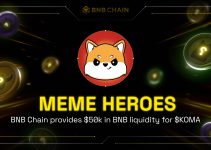
Introduction
The Decentralized Finance (DeFi) movement aims to create a novel alternative peer-to-peer financial system that is transparent, open-source, and permissionless. The DeFi ecosystem is constructed with composable, open-source, programmable “money legos” that provide global access to financial services with significantly lower fees, remarkably high yield, and disintermediation.
The year 2020 in the cryptoverse may well be characterized as the Year of DeFi due to the explosive growth, amazing innovations, and frantic activity in DeFi applications and protocols.
To provide some insights on the pace of growth, Total Value Locked (TVL) in the smart contracts of DeFi applications and protocols grew steadily throughout 2019 from $278 million on 1st January 2019 to $680 million on January 1, 2020. The major milestone of $1 billion TVL was reached on February 6, 2020. This was followed by a sharp decline in crypto asset value at the end of Q1 associated with the global financial market turmoil. Since then, TVL in DeFi has rocketed past $1 billion, and in a one-month period grew from $2.6 billion on 17th July to $6.2 billion on August 17.
New innovations and experiments are happening at a lightning pace. Tokenized Bitcoin, stablecoin swaps, DEX aggregators, lending pools, margin trading, derivatives, and of course yield farming are the key drivers of DeFi’s exponential growth. This rapid growth in DeFi has also surfaced significant issues and limitations, particularly for truly democratizing access to DeFi applications and protocols.
A critical issue is that DeFi is currently not inclusive and equitable for all market participants; high gas fees make it hard for market participants with more modest balances to partake. In addition, fees generated by DeFi protocols are critical to their success and to create profit for token holders, but the recent rise of transaction fees on Ethereum has reached a threshold where it offsets potential profits and subsequently reduces the potential transaction volume on the protocols. This is a lose-lose scenario for the protocol and its users. The only beneficiaries are the network miners. Most importantly, the current impact of gas prices is an antithesis to the principles of decentralization and DeFi, creating an unfair playing field where only the rich can get richer.
Top Reasons for Building DeFi on Binance Smart Chain
The vision of Binance is to improve the freedom of money. The Binance team believes that by spreading this freedom, it can significantly improve lives around the world. Thus, the team has built the holistic Binance ecosystem to empower entrepreneurs and users. Through the lens of DeFi, Binance Smart Chain, the community-driven public blockchain built by Binance and global developers, aims to improve the freedom of assets. The team behind it envisions The Internet of Value to be composed of an internet of blockchains where interoperable DeFi money legos are blockchain agnostic, and assets and users flow freely based on the needs and choices of users with the Ethereum mainnet serving as a global settlement layer. Binance Smart Chain provides several benefits to DeFi protocols and their users:
1. EVM Compatibility
Binance Smart Chain is fully EVM (Ethereum Virtual Machine)-compatible and can support all of the existing Ethereum toolings such as Metamask, Remix, Truffle, etc. At the same time, critical infrastructures like oracles (ChainLink and Band Protocol) are already integrated onto the Binance Smart Chain.
Ethereum developers can use most of the existing Ethereum developer tooling to implement DeFi dApps, and existing DeFi Smart Contracts can easily port to Binance Smart Chain with zero or minimal effort, which will significantly reduce the development overhead for projects to build on multiple chains.
2. A Rich and Growing Ecosystem of Assets
More than 110 BEP-2 assets and 139 trading pairs are listed on Binance DEX, which can seamlessly flow into Binance Smart Chain. Binance Chain has also pegged major cryptocurrencies that have their own blockchains, including Bitcoin, Ethereum, Ripple, Bitcoin Cash, Litecoin, EOS, and Tron. This mechanism will be used to continue growing the list of assets available on the Binance Smart Chain for DeFi protocols.
3. Cheap Transaction Fees
Ethereum transaction fees have been a major point of friction over the past few weeks, crossing 200 gwei at a point, which introduces a serious threat to the increasing adoption of DeFi with numerous projects actively exploring Layer 2 solutions to help pacify the issue.
Gas fees on Binance Smart Chain, by comparison, are 10 gwei per unit of gas. The real transaction fees on Binance Smart Chain will only be around 1 cent. It will dramatically decrease the overhead of DeFi protocols, and allow DeFi apps developers to focus on innovating. Low transaction fees will also encourage participation by market participants with lower balances, thus increasing overall transaction volume in the protocols.
4. High Performance
The consensus mechanism used in Binance Smart Chain, Proof of Staked Authority (PoSA), combines features from Delegated Proof-of-Stake (DPoS), and Proof-of-Authority (PoA). This consensus algorithm is built on a network of 21 validators, and can produce a block every 3 seconds based on current testnet testing, which will provide a high speed infrastructure for DeFi protocols. At the same time, the validators will get BNB rewards for executing tasks on the blockchain, which ensures stability and incentive without sacrificing transaction speed.
5. Cross-Chain DeFi Mechanisms – Making DeFi Borderless
In order to allow users and developers to move assets between chains, allowing more freedom, choice and flexibility, a number of cross-chain infrastructures are deployed on Binance Chain and Binance Smart Chain:
- The BEP-3 technical standard was proposed and implemented on the Binance Chain in late 2019. This mechanism enables atomic swaps on Binance Chain with EVM-compatible networks like Ethereum. Several project teams such as Kava are already leveraging the BEP3 standard to enable cross-chain atomic swaps on Binance Chain.
- Binance Chain and Binance Smart Chain have a native cross-chain communication and built-in transfer protocol that enable BEP2 tokens to be seamlessly migrated bi-directionally between the two networks, allowing for interoperability without the need of a trusted third party.
- Several other cross-chain protocols are currently being built or being deployed on Binance Smart Chain.
6. Funding & Investment
The Binance ecosystem provides several channels to support and bootstrap startups and projects, with new approaches for DeFi projects to be added soon:
- The Binance X Fellowship program has been operating for over 1 year and has already supported around 60 projects. Binance X Fellowship is a platform for early stage entrepreneurs seeking development grants. Eligible project team can apply for the Binance X Fellowship here: https://binancex.dev/fellowship.html
- Binance Labs is among the most active investment teams in crypto. In addition to incubating and investing in startups, the Binance Labs and Investment team also support the projects on token economics design and other key project elements. Direct investment application can be found here: https://labs.binance.com/
- Binance LaunchPad is the exclusive token launch platform of Binance. If your product is suitable for crowdfunding, you might want to learn more and apply here: https://launchpad.binance.com/
- The majority of DeFi projects require initial Liquidity Providers to bootstrap their protocols. Binance is actively providing liquidity in BNB and BUSD to selected DeFi projects such as Curve and Uniswap. Liquidity provision is subject to systematic evaluation by the Binance team. Please contact busd@binance.com to get more details.
7. Ecosystem
A vibrant and growing ecosystem is supporting Binance Chain and Binance Smart Chain, including:
- Over 30 wallet providers
- Over 600,000 users on Binance Chain and more than 15 million users on Binance.com, all nascent potential users of DeFi projects on Binance Smart Chain.
- One of the biggest and most influential megaphones in crypto twitter as well as several other channels to engage with the Binance community
Wrapping Up
Binance Smart Chain mainnet will be launched around the first week of September. Numerous DeFi projects are either experimenting with their new ideas or porting their protocols to Binance Smart Chain. Please join us and open this new chapter of DeFi on Binance Smart Chain.
If you have any feedback or questions about Binance Smart Chain, you can reach the Binance Smart Chain team on the Binance Chain Developer Telegram Group
About Binance Smart Chain
Binance Smart Chain is a sovereign smart contract blockchain delivering Ethereum Virtual Machine (EVM) compatible programmability. Designed to run in parallel with Binance Chain, Binance Smart Chain retains the former’s fast execution times and low transaction fees while adding Smart Contracts functionality to support compatible dApps.
For more information on Binance Smart Chain, visit:


